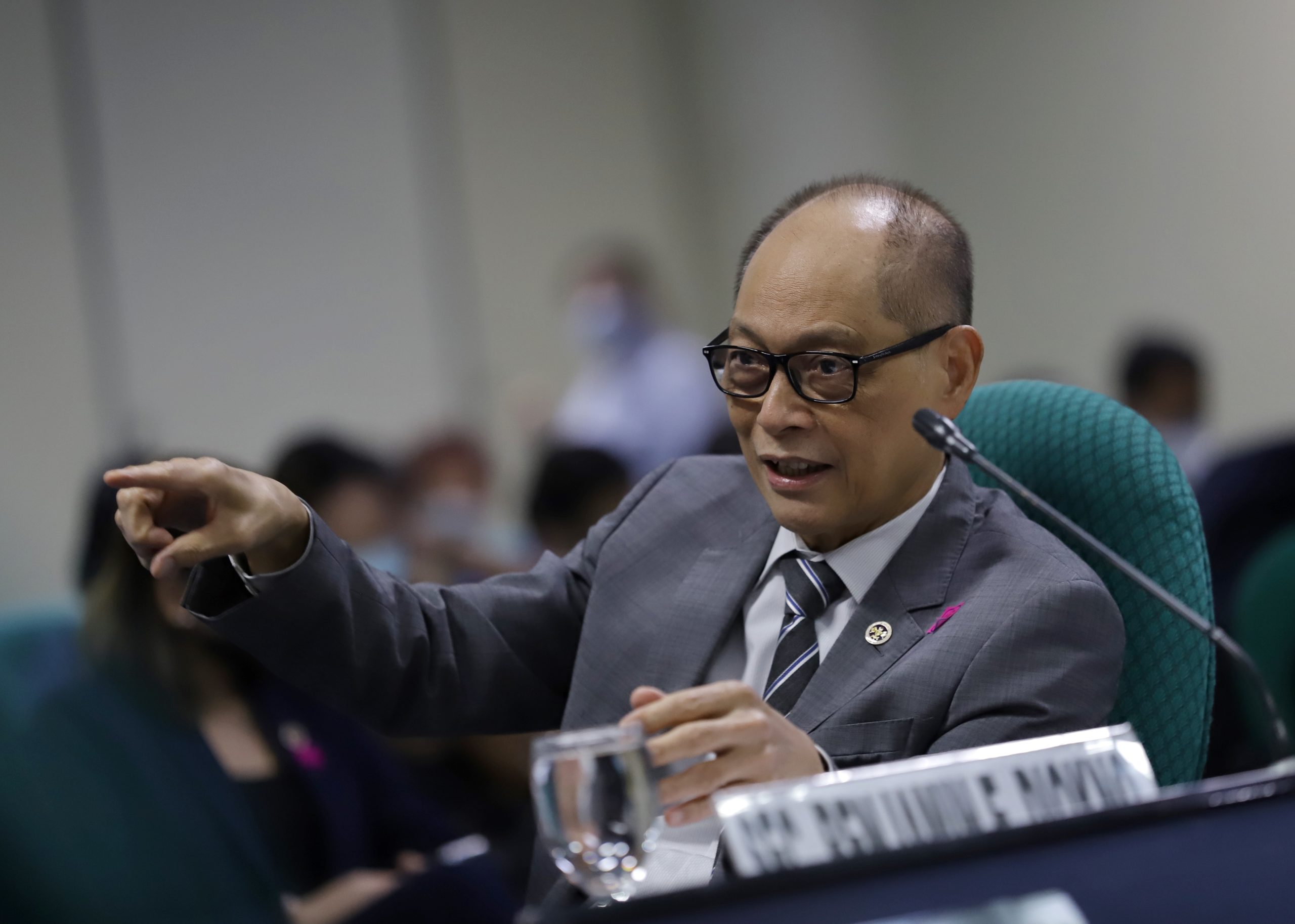Tweaked anew, Maharlika now open to foreign, private funders

Finance Secretary Benjamin Diokno —Senate PRIB
DAVOS, SWITZERLAND—A new version of the proposed Maharlika Investment Fund (MIF) may eventually open it up to foreign investors, including reputable multilateral institutions, to make it more “private sector-driven,” according to the country’s chief economic manager and a congressman who is one of its prime movers.
Speaking to the Inquirer in Davos, Switzerland, where he accompanied President Marcos to the World Economic Forum (WEF), Finance Secretary Benjamin Diokno said that once established, foreign investors could bring more funds into the MIF for crucial infrastructure projects of the administration.
This was how Indonesia had grown its sovereign wealth fund, Indonesia Investment Authority (INA), Diokno said.
“That is really the nature of the fund. For example, Indonesia’s INA started with $1 billion then grew as more investors came in,” Diokno said in an interview.
The Indonesian government jump-started INA with an initial capital of $5 billion and based on the latest reports, it had raised $25.5 billion since it was created in 2021.
“That could be a source of some important infra projects,” Diokno said.
At the WEF meeting, Mr. Marcos identified infrastructure development under his “Build, Better, More” flagship program as the pinnacle of his administration’s vision for an “equitable, prosperous and resilient” Philippines by 2040, while recognizing the private sector’s critical role in realizing its goals.
Various groups have raised concerns that the current form of the MIF bill approved by the House of Representatives could heighten the Philippines’ financial and fiscal risks.
These concerns are due to the sources of funding as stated in House Bill No. 6608—the Land Bank of the Philippines (Landbank), Development Bank of the Philippines (DBP) and the Bangko Sentral ng Pilipinas (BSP)—which all have histories of government bailouts and recapitalization.
‘Straightforward’ way
But according to economist Romeo Bernardo of think tank Global Source, a “straightforward” way to address these governance concerns would be for the state to own less than 50 percent of the fund.
Bernardo, who was finance undersecretary during the Ramos administration, had said the balance would be best taken up by multilateral organizations like the Asian Development Bank, International Finance Corp., Asian Infrastructure Investment Bank and private investors.
This could allow the government to multiply the size of the MIF from just P100 billion. At the same time, Bernardo had said that the willingness of multilateral lenders to invest could be a gauge of whether MIF was a good idea.
To be more attractive
In Manila, House ways and means panel chair Rep. Joey Salceda told the Inquirer on Friday that a “revised” version of the proposed MIF would entice foreign investors.
“The question is whether this version of the MIF bill will be more attractive to foreign investors, and we believe several elements make that happen,” he said.
Salceda said in an earlier interview with ANC that under the new proposal, the seed money for the MIF would come from dividends from government-owned and -controlled corporations (GOCC) instead of dividends or assets from the BSP, DBP and Landbank.
The funds would be securitized in 20 years, Salceda said.
“It’s basically securitization of about P 44.3 billion in annual dividends, so these are real surpluses,” he said, adding that the amount could grow to P765.96 billion at a certain discount rate.
“After that, there will be an initial public offering, so it won’t be a GOCC anymore. It will be a listed company in the Philippine stock market,” he said in the ANC interview.
‘Private-sector driven’
There would then be “greater room for private sector participation due to the initial public offering and the private sector majority ownership” in the latest version of the MIF, he told the Inquirer.
“This will also make the MIF a private-sector driven fund rather than one where the government’s exposure is greater. No sovereign guarantees or BSP regulatory reliefs needed, nor are any exemptions from GOCC governance and taxation necessary,” Salceda said.
The “reengineered” version is expected to be filed by the President’s allies in the Senate after the House speedily passed its MIF bill on Dec. 15 last year, which was itself revised to remove funds from the Government Service Insurance System and the Social Security System after that was met with a howl of protest from the public as these were private funds.
There is no similar bill pending in the Senate, although the chamber is expected to tackle the proposal next month.
“Of course, the Senate is its own body and I cannot speak for them. But, presumably, one of the President’s allies will file the revised bill with the President’s imprimatur,” Salceda said.
The business headlines in under one minute
Read Next
Subscribe to INQUIRER PLUS to get access to The Philippine Daily Inquirer & other 70+ titles, share up to 5 gadgets, listen to the news, download as early as 4am & share articles on social media. Call 896 6000.
For all the latest Business News Click Here
For the latest news and updates, follow us on Google News.



